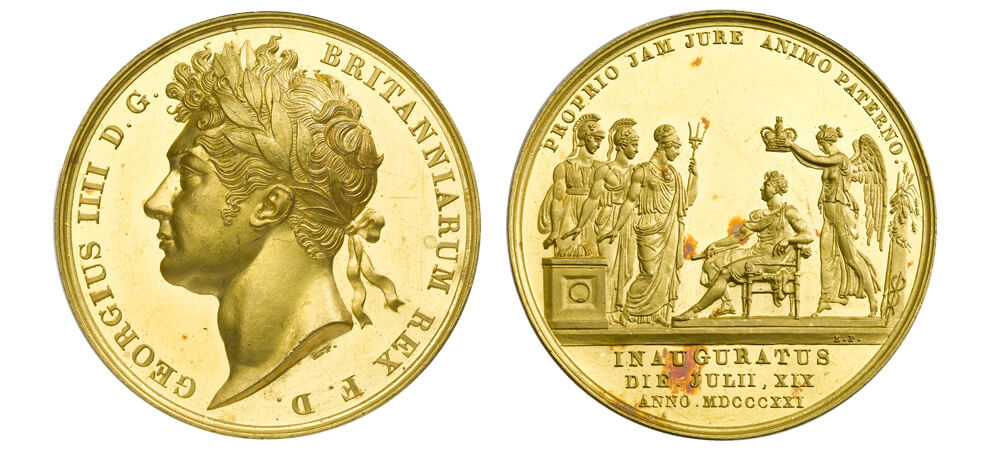George IV Coronation Medal
The Regency period, synonymous with classic design, fashion and society, came to an end as the Prince Regent ascended the throne in 1820 as George IV. His Coronation, a year later, was an extravagant display of Georgian splendour, for which Parliament paid £243,000 for his grand 5-hour ceremony and celebrations. To mark the occasion, the Royal Mint produced commemorative gold, silver and bronze medals.

The Italian engraver Benedetto Pistrucci was tasked with designing and engraving the medal. On the obverse is a flattering classical inspired portrait, a fashionable style for the period. The original reverse shows a symbolic depiction of the coronation, with three figures on the left representing England, Scotland and Wales. Pistrucci’s first design, though, was rejected by the Committee of the Privy Council due to the low level of the seated King. Pistrucci’s solution demonstrates his innovative thinking and talent: to avoid the additional work of producing a new die, he made a cut in the centre, adjusted the position and engraved a dais to raise the monarch. The two parts were then enclosed in an iron ring to produce the punch.
